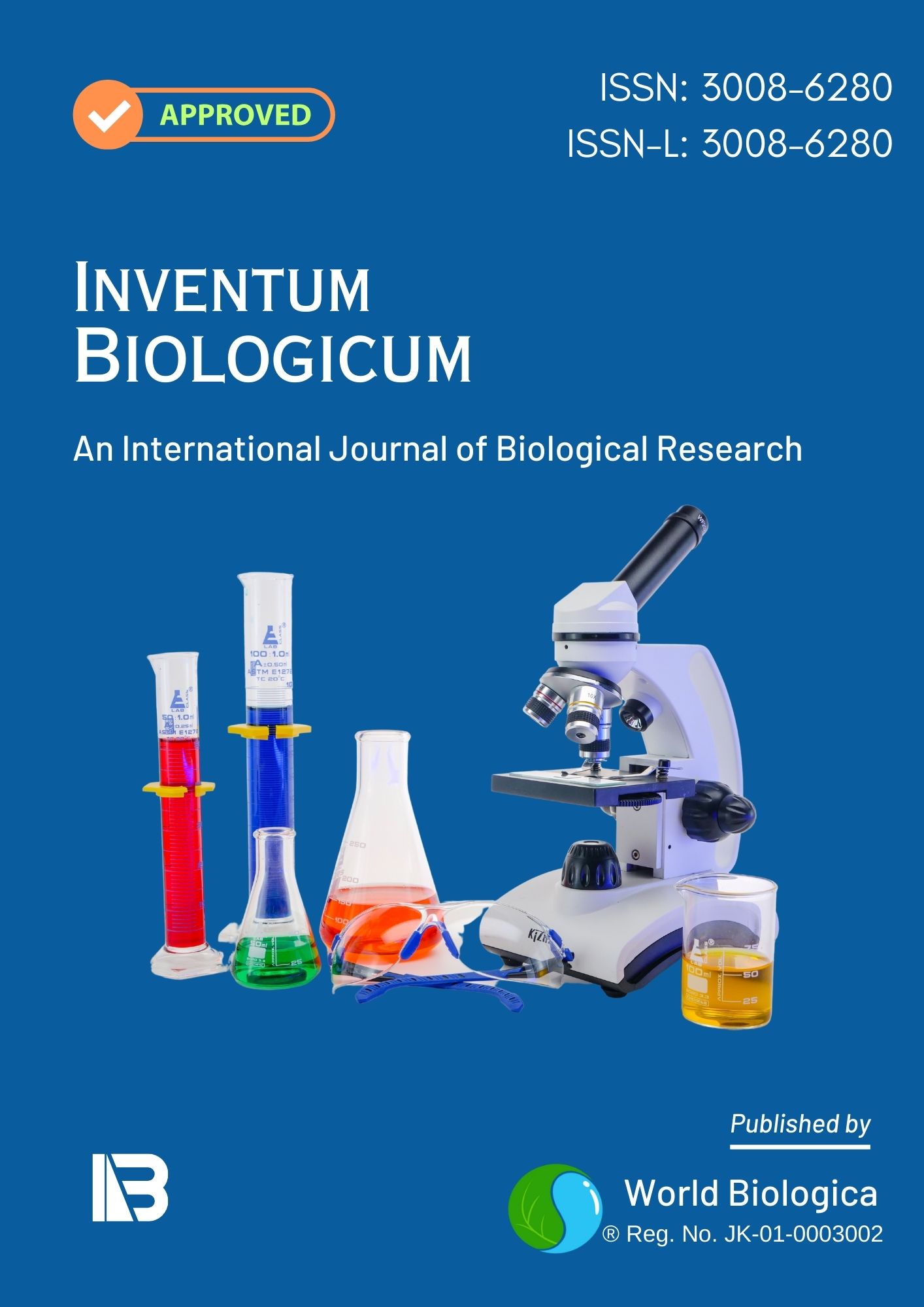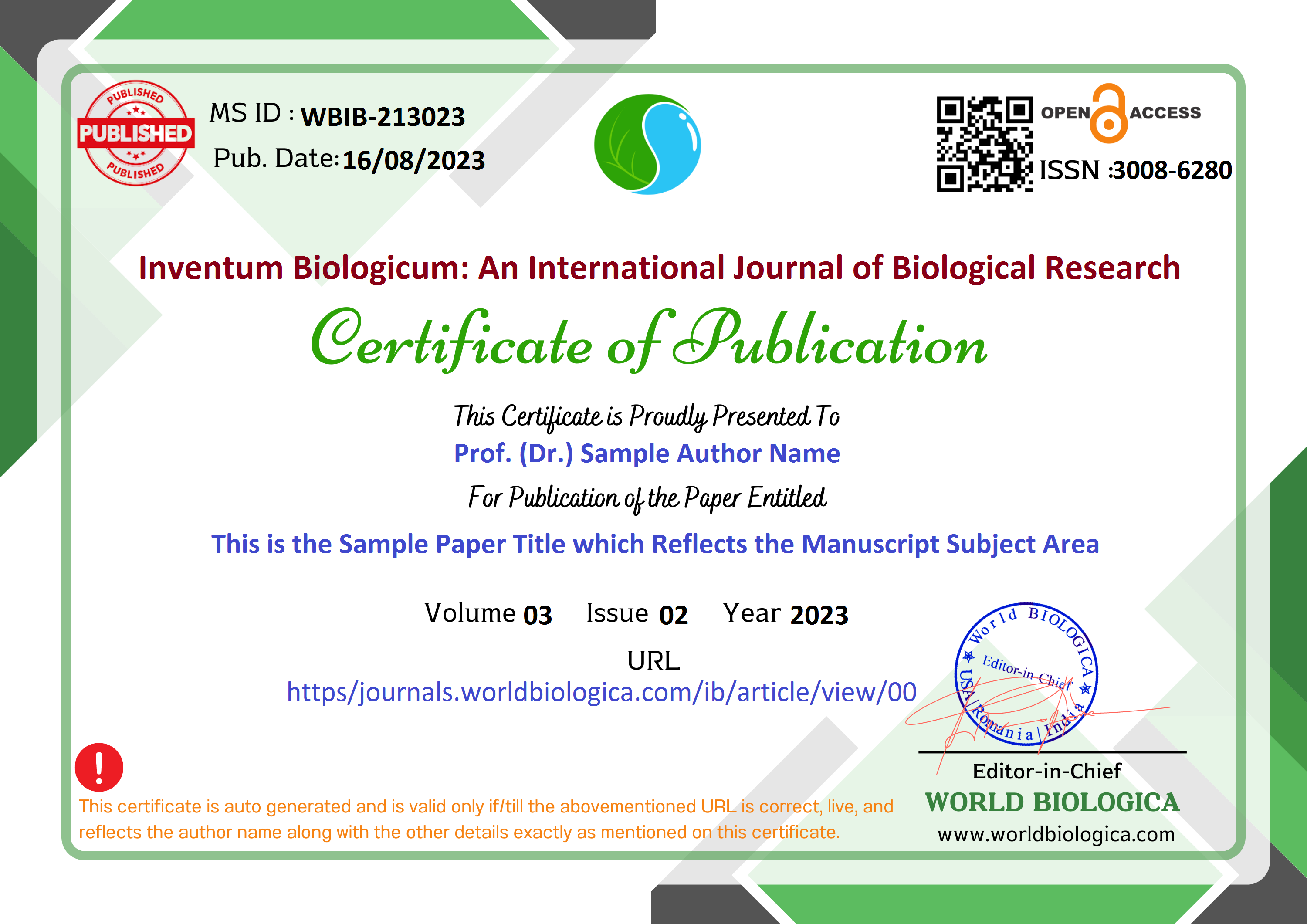Addressing Stubble Burning in Punjab: A Comprehensive Review of Causes, Impacts, and Sustainable Alternatives Through AgriThermoSolution
Keywords:
AgriThermoSolution, Crop Residue Burning, Environmental Impact, Air Quality, Sustainable Agriculture, Health Effects, Stubble Management, Greenhouse Gas Emissions, Punjab AgricultureAbstract
In Punjab’s intense rice-wheat cropping system, stubble burning is a frequent practice. It releases a substantial amount of pollutants, such as PM2.5 (200–500 µg/m³), PM10, CO, and CH4, which contributes to severe air pollution and greenhouse gas emissions. The reasons, including the 15–20 day gap between crops, the scarcity of reasonably priced residue management solutions, and financial limitations, are examined in this research. Significant dangers to public health, such as a 36% rise in respiratory infections, are associated with the environmental effects, which include a 30–40% reduction in soil organic carbon. Scalability and acceptance issues plague current mitigation initiatives, such as the Pradhan Mantri Kisan Samman Nidhi (PM-KISAN) policy and Happy Seeder technology. Alternatives that are sustainable are investigated, including crop diversification, in-situ management, and using residues for bioenergy. Adoption depends on legislative initiatives such as financial subsidies and carbon credits. The evaluation emphasises the need for comprehensive, empirically supported solutions that strike a compromise between farmers' financial reality and environmental sustainability.
Downloads
References
Abdurrahman, M. I., Chaki, S., & Saini, G. (2020). Stubble burning: Effects on health & environment, regulations and management practices. Environmental Advances, 2, 100011. https://doi.org/10.1016/j.envadv.2020.100011
Bhuvaneshwari S, Hettiarachchi H, Meegoda JN. (2019). Crop Residue Burning in India: Policy Challenges and Potential Solutions. Int J Environ Res Public Health. 7;16(5):832. Doi: https://doi.org/10.3390/ijerph16050832
Buttar, G.S., Sodhi, G.P.S., Manes, G.S., Sunidhi, Kaur, T., Brar, N.S., … Kaur, S. (Trans.). (2023). Adoption Pattern of Farm-Machinery based Solutions for In-situ Paddy Straw Management in Punjab . Indian Journal of Extension Education, 59(4), 103–108. https://doi.org/10.48165/IJEE.2023.59421
Cariappa, A. A. G., Konath, N. C., Sapkota, T. B., et al. (2024). Evaluating the potential and eligibility of conservation agriculture practices for carbon credits. Scientific Reports, 14, 9193. https://doi.org/10.1038/s41598-024-59262-6
Chakrabarti S, Khan MT, Kishore A, Roy D, Scott SP. (2019, 2020). Risk of acute respiratory infection from crop burning in India: estimating disease burden and economic welfare from satellite and national health survey data for 250 000 persons. Int J Epidemiol. 2019 Aug 1;48(4):1113-1124. Doi: https://doi.org/10.1093/ije/dyz022. Erratum in: Int J Epidemiol. 2020 Apr 1;49(2):710-711. Doi: https://doi.org/10.1093/ije/dyz279
Chawala, P., & Sandhu, H. A. S. (2020). Stubble burn area estimation and its impact on ambient air quality of Patiala & Ludhiana district, Punjab, India. Heliyon, 6(1), e03095. https://doi.org/10.1016/j.heliyon.2019.e03095
Deshpande, M. V., Kumar, N., Pillai, D., Krishna, V. V., & Jain, M. (2023). Greenhouse gas emissions from agricultural residue burning have increased by 75% since 2011 across India. Science of The Total Environment, 904, 166944. https://doi.org/10.1016/j.scitotenv.2023.166944
Deshpande, Monish & Kumar, Nitish & Pillai, Dhanyalekshmi & Krishna, Vijesh & Jain, Meha. (2023). Greenhouse gas emissions from agricultural residue burning have increased by 75 % since 2011 across India. Science of The Total Environment. 904. 166944. https://doi.org/10.1016/j.scitotenv.2023.166944
Devesh Singh et al., (2022). Crop Residue Burning and Its Relationship between Health, Agriculture Value Addition, and Regional Finance. Multidisciplinary Digital Publishing Institute. 13(9), 1405; https://doi.org/10.3390/atmos13091405
Downing, A. S., Kumar, M., Andersson, A., Causevic, A., Gustafsson, Ö., Joshi, N. U., Krishnamurthy, C. K. B., Scholtens, B., & Crona, B. (2022). Unlocking the unsustainable rice-wheat system of Indian Punjab: Assessing alternatives to crop-residue burning from a systems perspective. Ecological Economics, 195, 107364. https://doi.org/10.1016/j.ecolecon.2022.107364
Dutta, A., Patra, A., Hazra, K. K., Nath, C. P., Kumar, N., & Rakshit, A. (2022). A state of the art review in crop residue burning in India: Previous knowledge, present circumstances and future strategies. Environmental Challenges, 8, 100581. https://doi.org/10.1016/j.envc.2022.100581
Elena Grigorieva, et al., (2023). Adaptation of Agriculture to Climate Change: A Scoping Review. Multidisciplinary Digital Publishing Institute. 11(10), 202; https://doi.org/10.3390/cli11100202
Erbaugh, J., Singh, G., Luo, Z., Koppa, G., Evans, J., & Shyamsundar, P. (2024). Farmer perspectives on crop residue burning and sociotechnical transition in Punjab, India. Journal of Rural Studies, 111, 103387. https://doi.org/10.1016/j.jrurstud.2024.103387
Gottipati, Rohith & Burra, Pavan & Menon, Sandeep. (2021). Stubble burning: Root cause, impacts and its management in Indian scenario. Environment Conservation Journal. 22. https://doi.org/10.36953/ECJ.2021.22305
Hassan, M. K., Chowdhury, R., Ghosh, S., Manna, D., Pappinen, A., & Kuittinen, S. (2021). Energy and environmental impact assessment of Indian rice straw for the production of second-generation bioethanol. Sustainable Energy Technologies and Assessments, 47, 101546. https://doi.org/10.1016/j.seta.2021.101546
Huang, Tao & Ma, Jianmin & Song, Shijie & Ling, Zaili & Macdonald, Robie & Gao, Hong & Tao, Shu & Shen, Huizhong & Zhao, Yuan & Liu, Xinrui & Tian, Chongguo & Li, Yifan & Jia, Hongliang & Lulu, Lian & Mao, Xiaoxuan. (2022). Health and environmental consequences of crop residue burning correlated with increasing crop yields midst India’s Green Revolution. Npj Climate and Atmospheric Science. 5. 81. https://doi.org/10.1038/s41612-022-00306-x
Ishita Chandana, et al., (2023). Combustion & Stubble Burning: A Major Concern for the Environment and Human Health. Multidisciplinary Digital Publishing Institute. 6(2), 79; https://doi.org/10.3390/fire6020079
Khanna, Richa & Nath, Anil & Pal Singh, krishan. (2021). Stubble Burning: Issues and alternatives.
Khundrakpam, P., & Sarmah, J. K. (2023). Stubble Burning in India: Politics and Policy Responses. Indian Journal of Public Administration, 69(2), 303-316. https://doi.org/10.1177/00195561221149934
Khurana, Ananya & Kajale, Dilip & Cariappa, A G & Krishna, Vijesh. (2024). Shaping India’s climate future: A perspective on harnessing carbon credits from agriculture. Outlook on Agriculture. 53. https://doi.org/10.1177/00307270241240778
Kumar, P., Kumar, S., Joshi, L., Kumar, P., Kumar, S., & Joshi, L. (2015). The extent and management of crop stubble: Socioeconomic and environmental implications of agricultural residue burning: A case study of Punjab, India. In Agricultural Residue Burning in India (pp. 13-34).
Kumar, Rohit & Kaur, Navneet. (2024). Spatial Patterns of Stubble Burning during Kharif Season: A Geographical Analysis of Punjab. Indian Journal of Sustainable Development. 09. 29-42.
Lopes, Adrian & Viriyavipart, Ajalavat & Tasneem, Dina. (2020). The role of social influence in crop residue management: Evidence from Northern India. Ecological Economics. 169. 106563. https://doi.org/10.1016/j.ecolecon.2019.106563
Mapsofindia.com. (2022). Punjab district map. Maps of India. Retrieved October 25, 2024, from https://www.mapsofindia.com/maps/punjab/punjab-district.htm
Montes, C., Sapkota, T., & Singh, B. (2022). Seasonal patterns in rice and wheat residue burning and surface PM2.5 concentration in northern India. Atmospheric Environment: X, 13, 100154. https://doi.org/10.1016/j.aeaoa.2022.100154
Muzamil, M., Rasool, S., & H. Masoodi, U. (2023). In Situ and Ex Situ Agricultural Waste Management System. IntechOpen. Doi: https://doi.org/10.5772/intechopen.108239
Pandey, Rita & Kedia, Shailly & Malhotra, Anuja. (2020). The impact of stubble burning and poor air quality in India during the time of COVID-19 https://www.greengrowthknowledge.org/blog/impact-stubble-burning-and-poor-air-quality-india-during-time- covid-19
Parihar, D. S., Narang, M. K., Dogra, B., Prakash, A., & Mahadik, A. (2023). Rice residue burning in northern India: an assessment of environmental concerns and potential solutions–a review. Environmental Research Communications, 5(6), 062001.
Pradhan, Pratistha. (2024). The Effect of Stubble Burning and Residue Management on Soil Properties: A Review. International Journal of Plant & Soil Science. 36. 36-49. https://doi.org/10.9734/IJPSS/2024/v36i64604
Prasad, Shiv & Singh, Anoop & Korres, Nicholas & Rathore, Dheeraj & Sevda, Surajbhan & Pant, Deepak. (2020). Sustainable utilization of crop residues for energy generation: A Life Cycle Assessment (LCA) perspective. Bioresource Technology. 303. 122964. https://doi.org/10.1016/j.biortech.2020.122964
Saini, Dinesh & Singh, Vikas & Kumar, Anand. (2018). Stubble Burning: Either Farmers to be punished or Technology Need to be improved?.
Saliu, Fluturim & Luqman, Muhammad & AlKhaza’leh, Hasan. (2023). A Review on the Impact of Sustainable Agriculture Practices on Crop Yields and Soil Health. International Journal of Information Technology. 2. 1-13.
Sébastien Sauvé, Sophie Bernard, Pamela Sloan. (2016). Environmental sciences, sustainable development and circular economy: Alternative concepts for trans-disciplinary research, Environmental Development, Volume 17, Pages 48-56, ISSN 2211-4645, https://doi.org/10.1016/j.envdev.2015.09.002
Singh G.K., Saini D., Bhadouria, J. (2022). Stubble burning in the farmland of north India and its implications on environment and health. 11(2):166-171.
Singh, G., Kaur, K., & Meetei, T. T. (2021). Effect of in stubble burning on physico-chemical properties of soil, yield and environmental qualities. The Pharma Innovation Journal, 10(5), 298-305.
Singh, Gurdev. (2024). The environmental impact of Stubble burning. International Journal of Science and Research Archive. 12. 114-116. https://doi.org/10.30574/ijsra.2024.12.2.1206.
Singh, R.B. (2000). Environmental consequences of agricultural development: a case study from the Green Revolution state of Haryana, India. Agriculture, Ecosystems & Environment. 82. 97-103. https://doi.org/10.1016/S0167-8809(00)00219-X
Singh, Renu & Srivastava, Monika & Shukla, Ashish. (2016). Environmental sustainability of bioethanol production from rice straw in India: A review. Renewable and Sustainable Energy Reviews. 54. 202-216. https://doi.org/10.1016/j.rser.2015.10.005.
Singh, Vikas & Kumar, Anand & Saini, Dinesh. (2019). Stubble burning.
Tianjia Liu, Loretta J. Mickley, Sukhwinder Singh, Meha Jain, Ruth S. DeFries, Miriam E. Marlier. (2020) Crop residue burning practices across north India inferred from household survey data: Bridging gaps in satellite observations, Atmospheric Environment: X, Volume 8, 100091, ISSN 2590-1621, https://doi.org/10.1016/j.aeaoa.2020.100091
Downloads
-
Download PDF
 Abstract Views: 345,
Abstract Views: 345,  Download PDF: 293
Download PDF: 293
Published
How to Cite
Issue
Section
License
Copyright (c) 2024 Inventum Biologicum: An International Journal of Biological Research

This work is licensed under a Creative Commons Attribution-NonCommercial-NoDerivatives 4.0 International License.


















